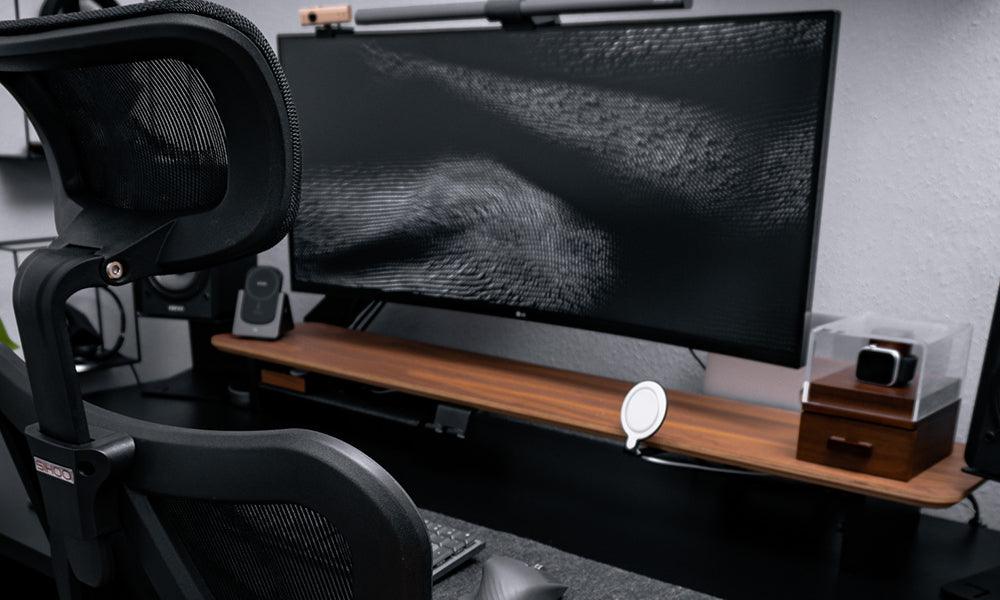Whether you're at a corporate office, a home office, or a co-working space, one constant remains - the need for a comfortable and ergonomically designed office chair. A well-adjusted office chair can make a world of difference in terms of comfort, productivity, and overall well-being. In this article, we will explore five common office chair adjustments that can help you achieve the perfect balance between comfort and efficiency.
Seat Height Adjustment
One of the most basic yet essential office chair adjustments is seat height. The proper seat height ensures that your feet rest flat on the floor, and your knees are at a 90-degree angle, promoting proper posture and comfort during long hours of work. Here's how to adjust your chair's seat height:
Start by standing in front of your chair, with your feet flat on the floor.
Adjust the seat height lever located under the chair seat, usually on the right-hand side. Lift the lever to raise the chair or press it down to lower it.
Sit down in the chair and check if your feet comfortably rest flat on the floor, and your knees form a 90-degree angle.
Make sure your thighs are parallel to the ground.
Fine-tune the seat height until you achieve the perfect balance. Your goal is to maintain a neutral posture where your feet, knees, and thighs are in ideal alignment.
Remember that an incorrect seat height can lead to discomfort and may result in long-term health issues like back pain, so getting this adjustment right is crucial.
Backrest Tilt and Lumbar Support
The backrest tilt and lumbar support adjustments are essential for maintaining proper spinal alignment and reducing strain on your lower back. The lumbar region of your spine naturally has an inward curve, and it's crucial to support this curve to prevent discomfort and long-term back issues. Here's how to make these adjustments:
Many modern office chairs come with a backrest tilt feature. To adjust it, lean back in your chair and use the lever or knob usually located beneath the seat or on the chair's back.
Experiment with different angles until you find the one that feels most comfortable and supportive for your back.
Additionally, adjust the lumbar support feature if your chair has one. This support should fit snugly in the natural curve of your lower back. If your chair doesn't have built-in lumbar support, you can use a lumbar pillow to achieve the same effect.
Properly adjusting the backrest tilt and lumbar support ensures that your spine is adequately supported and reduces the risk of back pain and discomfort during prolonged sitting.
Armrest Height and Position
Armrests play a significant role in maintaining proper ergonomics and comfort while working. When improperly adjusted, armrests can lead to shoulder and neck pain. Here's how to adjust armrests for your comfort:
Sit in your chair and ensure your feet are flat on the floor, with your knees at a 90-degree angle.
Adjust the armrest height so that your forearms are parallel to the ground.
Armrests should not be so high that they force your shoulders into an elevated position or so low that your arms dangle.
Make sure your elbows rest comfortably on the armrests without raising your shoulders.
Some chairs also allow for horizontal adjustments. You can move the armrests closer or farther from your body to accommodate the width of your shoulders and the size of your desk.
Properly adjusted armrests can help prevent shoulder and neck strain, ensuring that you can work comfortably for extended periods.
Seat Depth Adjustment
The seat depth adjustment is often overlooked, but it can significantly impact your overall comfort and support. It's especially important for people with longer or shorter legs. Here's how to make this adjustment:
Start by sitting all the way back in your chair, ensuring your back is fully supported by the backrest.
There should be a few inches of space between the edge of the seat and the back of your knees.
Adjust the seat depth by using the lever or knob, typically located under the seat.
Slide the seat forward or backward to achieve the desired depth, ensuring your back remains fully supported.
Proper seat depth adjustment ensures that your thighs are adequately supported and helps reduce pressure on your knees and lower back. This is particularly important for taller individuals who may find standard chair seats too short.
Swivel and Mobility
Office chairs are equipped with wheels or casters to provide mobility and flexibility. Properly utilizing the swivel and mobility features can reduce strain and make it easier to access different areas of your workspace. Here's how to make the most of these features:
Use the swivel feature to access different areas of your desk without straining your back or neck. Avoid overextending or twisting your body by using the chair's swivel.
Ensure the wheels or casters are functioning correctly, allowing you to move effortlessly around your workspace.
Keep your feet flat on the floor and use your legs to maneuver the chair instead of reaching for objects, which can lead to strain.
Properly using the swivel and mobility features of your office chair can help reduce strain and make your workspace more efficient.
Conclusion
A well-adjusted office chair is an essential element of a productive and comfortable workspace. It not only supports your body but also promotes good posture and overall well-being. By making these common office chair adjustments, you can create an ergonomic and comfortable workspace that will contribute to your productivity and overall health.
Remember that your body's needs may change over time, so it's essential to periodically reevaluate and readjust your office chair to ensure it continues to provide the necessary support and comfort. Investing time and effort into these adjustments can make a world of difference in your day-to-day work experience, leading to improved focus and reduced discomfort. Your office chair is more than just a piece of furniture; it's an essential tool for your success and well-being.



































